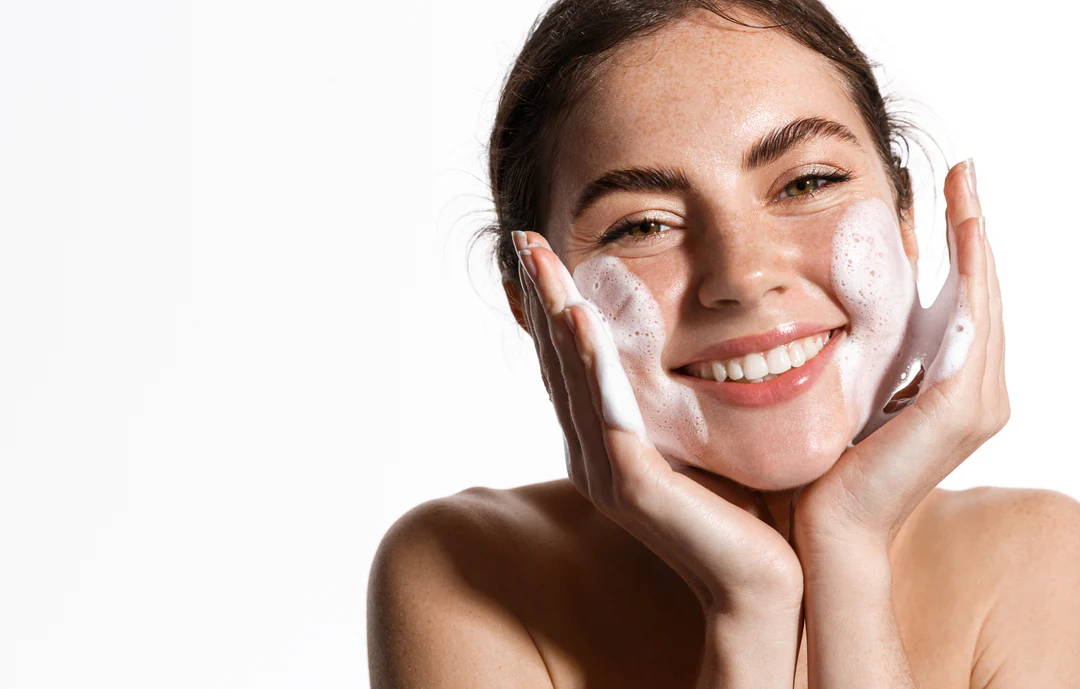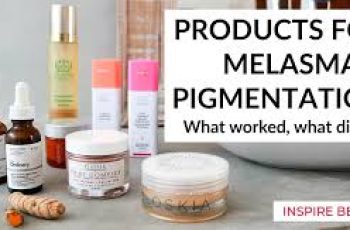Can Hyaluronic Acid and Peptides Work Together?
The beauty of hyaluronic acid is that it’s one of the few ingredients that can be used with other ingredients without causing irritation, even those that are notoriously potent and sometimes harsh on the skin. As for peptides, they’re also a skincare ingredient that often works effectively when combined with other ingredients. The question is whether the two can work well together. This is what we’ll explore together in today’s blog post. Before we get started, let’s quickly review the benefits of peptides and hyaluronic acid and how they work to keep your skin healthy and happy.
What are the benefits of hyaluronic acid for skincare?
The moisturizing properties ensure that moisture is trapped in the skin and keeps the protective barrier in its healthiest state.
Helps reduce the appearance of fine lines and wrinkles.
Rejuvenates the skin and ensures a smoother texture.
Stimulates skin cell regeneration, ensuring a healthier appearance.
Reduces signs of hyperpigmentation, dark spots, and acne scars.
Improves overall skin clarity.
If you want to learn more about hyaluronic acid, read our dedicated blog post on this clever moisturizer.
What are the benefits of peptides for skincare?
Improves the skin barrier and protects against damage caused by free radicals such as pollution and UV rays.
Reduces signs of wrinkles and makes skin look plumper and firmer.
Has antimicrobial properties, i.e. it kills acne-causing bacteria.
Relieves inflammation and repairs skin damage.
Boosts the production of collagen and elastin in the underlying layers.
There is a lot more to learn about peptides, so don’t forget to read our more detailed blog post on the benefits you can expect.
Can hyaluronic acid and peptides be used together?
When you use hyaluronic acid and peptides together, you actually can. The two form a potent skin combination that can be highly effective while ensuring that the protective barrier remains healthy and in top condition. With the help of peptides acting on the underlying layers, collagen production is boosted, giving the skin a youthful elasticity. You’ll also find that hyaluronic acid benefits from layering with a peptide serum, as it draws in the moisture contained in the formula and holds it in place.
What not to mix with peptides?
There are some skin ingredients that can be mixed with peptides, and some that should be avoided. Here are some examples of effective partnerships:
Don’t Mix Peptides and Acids
Exfoliating acids, such as glycolic, lactic, and other alpha hydroxy acid members, as well as the popular beta hydroxy acid salicylic acid, should not be mixed with peptides. This is because these acids can break the bonds that make up the amino acid chains in the peptides. This means that they cannot perform their intended effects on the skin.
Do Retinol and Peptides Mix?
Because retinol is considered so potent, its combination with other ingredients is often limited. However, peptides are an effective partner and actually help improve the penetration of retinoid formulas once they are applied to the skin’s surface. Since retinol is quickly absorbed into the skin, the nourishing effects of the peptides kick in, leaving your complexion vibrant, plump, and youthful.
As with all skincare ingredients, it’s important to perform a 24-hour patch test before applying a new formula to your face. If you have any further concerns, it’s best to consult a doctor or healthcare professional to avoid unnecessary skin irritation.
What Should You Not Take with Hyaluronic Acid?
There are very few skincare ingredients that can’t be mixed with hyaluronic acid. You’ll often find that most over-the-counter products have at least 2% hyaluronic acid in their formulas. That’s because hyaluronic acid works well with almost any ingredient. Believe it or not, the only ingredient that can make hyaluronic acid fail is hyaluronic acid itself. This is because when too much hyaluronic acid is applied topically, the humectant content is too high and moisture is drawn away from the underlying layers of the skin, which can lead to dehydration over time.
How long does it take for peptides to work?
The first time you apply a peptide-rich serum to your skin, you’ll notice a change in your overall complexion. With continued use, the increase in nourishing amino acids can significantly improve texture and radiance, and reduce signs of premature aging. After about 3-6 months, you’ll see the full benefits of peptides and how well they work on your skin.
How to Introduce Peptides to Your Skin?
You can apply peptides to your skin twice a day. They effectively moisturize the surface of your skin, ensuring that the protective barrier remains at its healthiest and can protect itself from potential damage, such as: B. UV radiation, pollution, and other free radicals. You’ll often find peptides in products like serums and moisturizers. The cardinal rule of skincare is to make sure you apply the products in the correct order, from thinnest to thickest consistency. This means using these products later in your routine, as serums and moisturizers are thicker than cleansers, toners, etc.
Do peptides firm your skin?
Yes, peptides work in the lower layers of the skin to boost and stimulate collagen production. Over time, this can lead to skin that appears firmer and signs of aging, such as: B. Sagging skin due to loss of elasticity, can be significantly improved. Many skin care experts recommend combining your peptide products with other products containing retinol for a routine that can really make a difference. When using the products, you should also make sure to always apply upwards, not downwards, as this counteracts the effects of gravity on the skin.
Here’s more information on using hyaluronic acid and peptides together. Don’t forget to find us on Instagram if you have any other skin-related questions.
DQH Knowledge drop: In your 20s, your skin cell turnover decreases. (Cell turnover is a key component in keeping your skin youthful.) You know what else slows down? Your collagen production. Starting in your 20s, collagen decreases by about 1 percent per year. Should you want to prevent fine lines and wrinkles, start by eliminating behaviors that contribute to premature aging. “If it’s bad for you, it’s bad for your skin,” says dermatologist Michel Somenek.
“Cigarette smoking reduces blood flow to the skin and causes premature wrinkling and a dull skin texture. Making the repeated pursed motion to inhale can also cause smoker’s lines. Alcohol and recreational drugs are toxins for the skin that damage its cellular structure and DNA,” Somenek tells us. “The faster you eliminate vices while you are young, the better chance your skin and body have to recuperate.” Also, adopting an anti-aging routine in your 20s is key. After all, the best offense is a good defense. We spoke to Somenek and experts Joshua Ross and Audrey Kunin to find out more.
Keep reading for the best anti-aging products for your 20s, according to skincare professionals.
Sunscreen
“We all know that the sun is the number one cause of skin aging and starting the prevention in your 20s is very important,” Ross says. “The majority of your sun damage won’t start to appear until you’re in your 30s, so don’t wait until you see it surface or you’ll be behind the curve. Stay ahead of it with a good-quality zinc-based sunscreen worn daily.”
Farmacy Green Defense Daily Mineral Sunscreen
An invisible sunscreen with SPF 30, plus botanical extracts meant to protect skin with tons of antioxidants. Bonus: It’s clean and fine to use under makeup.
Bareminerals Complexion Rescue™ Tinted Moisturizer Broad Spectrum SPF 30
Although we recommend you use your SPF and moisturizer separately, we also understand moments when you don’t have time or energy for that extra step. For those times, this bareMinerals moisturizer is a great thing to have on hand.
Vitamin C Serum
“A great introduction to anti-aging is to start with a vitamin C serum in your morning skincare routine,” Ross says. “It’s a powerful antioxidant that will neutralize free radicals and brighten the skin.” He adds that it’s a great way to counteract the effects of the sun’s harmful rays, which, as previously mentioned, are among the biggest causes of premature aging.
Drunk Elephant C-Firma™ Vitamin C Day Serum
The Drunk Elephant C-Firma is a lightweight serum that promises to give skin a glow by combining the brightening powers of vitamin C with ferulic acid, l-ascorbic acid, and vitamin E. The included sodium hyaluronate is meant to replace hydration loss, so you shouldn’t have to deal with any irritation.
Sunday Riley C.E.O. Rapid Flash Brightening Serum
This potent serum is jam-packed with vitamin C (15 percent, to be exact), which means it’s a potential superstar at both brightening skin and dousing it in antioxidants.
Peptides
Using peptides on your skin has many benefits, says Somenek. “The skin barrier is what defends the body against pollution, UV rays, bacteria, and toxins. It can be damaged by several everyday factors. Using topical peptides aids in building a stronger barrier,” he says. “Peptides comprise elastic fibers, which are a type of protein. These fibers help to make skin appear taut and firm. Peptides can also help repair damaged skin, relieve inflammation, and even out skin tone. Some peptides can kill acne-causing bacteria that is common in 20-somethings.”
Kunin agrees, saying, “Peptides are an excellent entry point for supporting collagen.” She recommends looking for face and eye treatments that contain these collagen-boosting powerhouses.
Charlotte Tilbury Magic Eye Rescue Cream
This Charlotte Tilbury super-emollient eye cream has a base of coconut oil and shea butter (read: it’s incredibly hydrating). Botanicals plus peptides are meant to help reduce dark circles and boost collagen, respectively.
This creamy moisturizer serves up potent collagen-boosting peptides and pycnogenol, and antioxidant-rich vitamin C. “Instead of sitting on top of the skin, peptides penetrate the outer layer so they go deep. The ‘signals’ they send tell the cells to produce elastin and collagen, which are needed for youthful-looking skin,” explains Somenek.
At-Home Peel Pads
Remember that skin cell turnover fiasco we talked about earlier? One way to help support it is by exfoliating. “Exfoliation is important to help keep skin fresh and luminous,” Kunin says. She recommends using at-home peel pads as an easy and effective way to exfoliate.
“The goal in your 20s is to fight the slowing pace of cell turnover. It is wise to use products that gently exfoliate, yet still remove oil and other impurities. Products that have Alpha Hydroxy Acids (AHA) or Beta Hydroxy Acids (BHA) are a good choice.”
According to Somenek, you should only exfoliate two to three times a week. “People of all ages are guilty of over-exfoliating and that can be too much of a good thing,” he says.
Dermadoctor Kakadu C Intensive Vitamin C Peel Pad
A few swipes of this Derma Doctor powerful peel pad promise to leave your skin glowing and smooth, thanks to the seven (yes, seven) types of chemical exfoliants, including AHA and BHA. It also contains vitamin C via Kakadu plum extract for added brightening and antioxidant protection.
KEY INGREDIENTS Kakadu plum extract is sourced from the Kakadu plum, a fruit grown in northern Australia. It contains vitamin C, which restores the skin’s natural barrier, increases collagen production, and soothes irritation.
Dr. Dennis Gross Skincare Alpha Beta® Universal Daily Peel Pads
These are the gold standard of peel pads, with a cult following and over 900 five-star reviews on Sephora. They’re easy to use and contain a blend of anti-aging exfoliating acids.
Emollient Night Cream
“In your 20s, you need to start upping the hydration in your skincare routine. You may have been cautious of over-moisturizing because of acne in your teens, but as you enter your 20s, your skin transitions and becomes drier,” Ross says. “I recommend an emollient night cream added into your evening skincare regimen.”
“Twenty-somethings need to make sure that they are not using creams that will clog their pores and cause excess oil production,” says Somenek. Opt for non-comedogenic products.
Cerave Skin Renewing Night Cream
One great choice is the CeraVe Skin Renewing Night Cream, which is a non-comedogenic night cream that leaves skin soft and glowy. It combines the moisturizing powers of ceramides and hyaluronic acid.
RoC Retinol Correxion Max Hydration Creme
“The best night cream ingredients contain retinol, benzoyl peroxide, and/or salicylic acid or hyaluronic acid. The goal is to moisturize, yet remove excess oil,” says Somenek. This Roc Retinol Correxion cream fits the bill as it contains both hyaluronic acid and retinol so it promises to moisturize while also being non-comedogenic.



